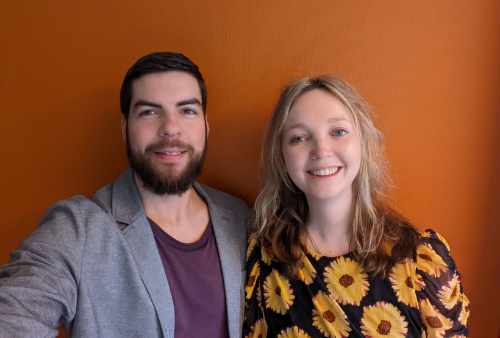Embarking on a transformative psilocybin therapy journey requires careful preparation, mindful navigation, and thoughtful integration. By following key guidelines, individuals can enhance the safety and efficacy of their experience, leading to profound personal growth and healing.
Key Takeaways
- Set clear intentions before the journey to guide your experience.
- Create a safe and comfortable space to support a positive mindset.
- Engage in mental and emotional preparation to cultivate resilience and openness.
- Practice mindfulness techniques to stay present and grounded during the experience.
- Use journaling and reflection to process insights and integrate lessons learned.
Preparing for the Journey
Setting Intentions
Before embarking on a psilocybin therapy journey, it’s crucial to set clear intentions. Intention-setting is a powerful tool that can guide your experience towards personal growth and healing. Consider what you hope to achieve or confront during your session. This could range from seeking emotional release, understanding personal patterns, or exploring spiritual dimensions.
- Reflect on your current life situation
- Identify areas you wish to transform
- Contemplate your aspirations for personal development
Setting an intention is like drawing a map of where you wish to go — it becomes a driving force in the therapeutic process.
Remember, your intentions need not be overly specific. Sometimes, the intention to remain open and receptive to the experience is just as valuable. Allow your intentions to evolve as you approach your session, and hold them gently in your awareness throughout the journey.
Creating a Safe Space
The environment in which you undergo psilocybin therapy plays a crucial role in shaping your experience. A safe, comfortable, and controlled setting can significantly enhance the therapeutic process. It’s important to consider both the physical and interpersonal elements of your surroundings.
- Choose a quiet, familiar, and private location.
- Ensure the space is free from interruptions and distractions.
- Create a comfortable area with items that promote relaxation, such as cushions, blankets, and soft lighting.
The setting should be a sanctuary where you feel at ease to explore the depths of your consciousness without external pressures.
Surround yourself with supportive individuals who respect your journey and are trained to assist if needed. This could be a therapist, a trusted friend, or a family member who understands the nature of the experience and is committed to your well-being.
Mental and Emotional Preparation
Entering a psilocybin therapy session with a clear and calm mind is crucial. Mental and emotional preparation can significantly influence your experience. Take time to address any fears or anxieties beforehand, and consider practices that promote relaxation and introspection.
- Engage in calming activities such as meditation or yoga.
- Discuss any concerns with your therapist or guide.
- Ensure you have no pressing obligations that might distract you.
Remember, the goal is to foster a state of openness and receptivity, allowing for a transformative experience.
By preparing mentally and emotionally, you create a foundation for a meaningful and insightful journey. This preparation is not just about the immediate experience, but also about cultivating a mindset that will benefit your post-experience integration.
Navigating the Experience
Mindfulness Practices
During a psilocybin therapy session, mindfulness practices can serve as anchors, helping individuals remain present and engaged with their experience. Mindful breathing is a fundamental technique that can be utilized to maintain a sense of calm and focus. It involves paying close attention to the rhythm of your breath, noticing each inhale and exhale without judgment.
Mindfulness also extends to observing thoughts and feelings as they arise, acknowledging them without becoming overwhelmed. This practice encourages a non-reactive state, allowing experiences to unfold naturally.
Here are some simple mindfulness exercises to try during your session:
- Focus on the sensations in your body
- Listen to the sounds around you, letting them come and go
- Observe your thoughts as if they were clouds passing in the sky
Remember, the goal is not to empty the mind but to become aware of the moment-to-moment experience, fostering a sense of peace and acceptance.
Integration Techniques
Integrating the insights from a psilocybin therapy session is crucial for a transformative experience. Developing a set of integration techniques can help you apply the lessons learned to your daily life. These techniques often involve a combination of reflective practices and actionable steps.
-
Reflective Practices:
- Meditation
- Contemplative walks
- Artistic expression
-
Actionable Steps:
- Setting small, achievable goals
- Making lifestyle changes
- Engaging in community service
It’s important to remember that integration is a personal and ongoing process. There is no one-size-fits-all approach, and what works for one individual may not work for another. Patience and self-compassion are key as you navigate this journey.
Regularly scheduled integration sessions, whether self-guided or with a therapist, can provide structure to the process. Keeping a journal of your progress can also be beneficial, as it allows you to track changes over time and reflect on your growth.
Coping with Challenging Moments
During a psilocybin therapy session, participants may encounter difficult or intense emotional states. It’s crucial to have strategies in place to navigate these moments safely.
- Stay grounded: Focus on your breath or a physical object in the room.
- Acceptance: Acknowledge the feelings without judgment and let them pass.
- Seek support: If you’re with a guide or therapist, communicate your discomfort.
Remember, challenging moments are often part of the healing process and can lead to significant personal insights.
It’s also helpful to have a pre-planned list of comforting activities or thoughts that can serve as anchors. These might include:
- Listening to calming music
- Reciting affirmations or mantras
- Visualizing a peaceful place
By preparing for these moments in advance, you can ensure a more manageable and transformative experience.
Post-Experience Integration
Journaling and Reflection
The practice of journaling after a psilocybin therapy session is a powerful tool for integration. It allows you to capture insights, emotions, and thoughts that arose during the experience. Begin journaling as soon as possible after the session to ensure that your memories are fresh and your reflections are vivid.
- Record your initial feelings and thoughts.
- Note any significant visions or insights.
- Describe how your perspective on certain issues may have shifted.
Reflecting on your journal entries over time can reveal patterns and themes that may not have been apparent initially. This ongoing process helps to solidify the transformative aspects of your experience and can guide future personal development.
Remember, the act of writing itself can be therapeutic. It’s not just about documenting the experience; it’s about engaging with it actively, which can foster deeper understanding and healing.
Seeking Professional Support
After a transformative psilocybin therapy experience, it’s crucial to seek professional support to process and understand the journey you’ve undergone. A therapist specialized in psychedelic integration can offer valuable insights and guidance.
Professionals can help you to:
- Unpack the symbolism and emotions encountered during the experience
- Develop strategies for applying insights to your daily life
- Address any psychological challenges that may have surfaced
Remember, the path to integrating a psychedelic experience is as personal as the journey itself. Professional support can provide a structured framework for this process.
Finding the right professional is key. Consider the following when choosing a therapist:
- Their experience with psychedelic therapy
- Their approach to integration
- Your comfort level with them
Professional support is not just about making sense of the experience; it’s about leveraging it for personal growth and healing.
Community Integration
After the introspective journey of psilocybin therapy, integrating your experiences within a community can be profoundly beneficial. Sharing insights and challenges with others who have walked a similar path fosters a sense of belonging and can provide additional layers of understanding and support.
Engaging with a community helps ground the insights gained during therapy and allows for the exploration of new perspectives. It’s important to find a group that aligns with your values and approach to healing.
- Seek out local or online support groups
- Attend workshops or group therapy sessions
- Participate in community events focused on mental health and wellness
Remember, the goal of community integration is not to simply recount your experiences, but to build meaningful connections and continue the growth initiated during your transformative journey.
Conclusion
In conclusion, prioritizing safety is paramount when embarking on a transformative psilocybin therapy experience. By following the key guidelines outlined in this article, individuals can enhance the therapeutic benefits of psilocybin while minimizing potential risks. Remember to always seek guidance from trained professionals, create a supportive environment, and approach the experience with intention and respect. With a mindful and cautious approach, psilocybin therapy has the potential to offer profound healing and personal growth.
Frequently Asked Questions
What should I do if I feel overwhelmed during the psilocybin therapy session?
If you feel overwhelmed, it’s important to communicate with your guide or facilitator. They can provide support and guidance to help you navigate through the experience.
Is it normal to experience intense emotions during a psilocybin therapy session?
Yes, it is normal to experience intense emotions as psilocybin can bring up deep-seated feelings and memories. It’s part of the healing process.
How can I prepare my physical environment for a psilocybin therapy session?
You can create a comfortable and safe space by dimming the lights, playing calming music, and ensuring that you have everything you may need within reach.
What is the role of a therapist or guide in a psilocybin therapy session?
A therapist or guide provides emotional support, helps you navigate the experience, and assists in integrating insights gained during the session.
How long does the effects of psilocybin last during a therapy session?
The effects of psilocybin can last between 4 to 6 hours, but the overall experience may continue to impact you for days or even weeks after the session.
Can psilocybin therapy be beneficial for individuals with mental health conditions?
Psilocybin therapy has shown promising results in treating various mental health conditions, but it should always be conducted under the guidance of trained professionals.

